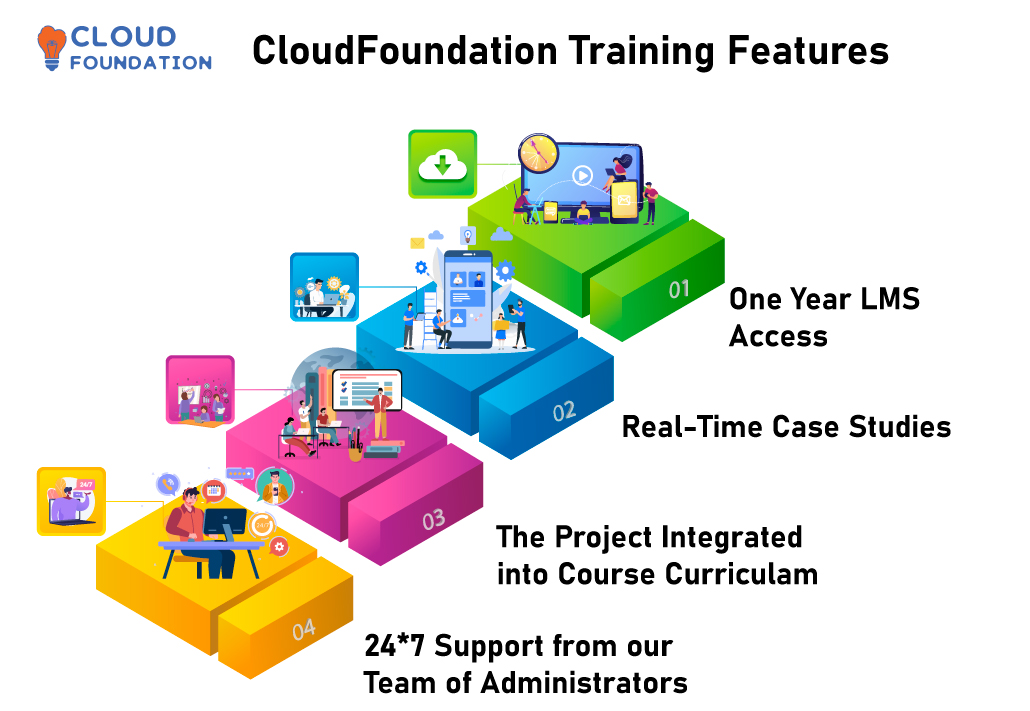Microsoft Azure AZ-900 Training – The only Course you need
Microsoft Azure AZ-900 Training – The only Course you need
⏰26 hours | ▶️ 23 Videos | 📣 11206 Participants | 🎓 6228 Reviews | 4.9 ⭐⭐⭐⭐⭐
Choose a Plan that Works for You
Self Paced
- Advanced sessions
- Interview Q&A
- Free study Materials
- Premium Technical support
Instructor Led Live Training
- Live Instructor
- Advanced sessions
- Interview Q&A
- Premium Technical Support
Corporate Training
- Live Instructor
- Advanced sessions
- Interview Q&A
- Premium Technical Support
Upcoming Batches PST
Weekday
| Nov 12(1 HR A DAY) |
| 06:00 PM PST |
| Enroll Now → |
Weekday
| Nov 26(1 HR A DAY) |
| 06:00 AM PST |
| Enroll Now → |
Weekday
| Nov 22(1 HR A DAY) |
| 07:00 PM IST |
| Enroll Now → |
Upcoming Batches IST
Weekday
| Nov 13(1 HR A DAY) |
| 06:30 AM IST |
| Enroll Now → |
Weekday
| Nov 26(1 HR A DAY) |
| 06:30 PM IST |
| Enroll Now → |
Weekday
| Nov 23(1 HR A DAY) |
| 07:00 AM IST |
| Enroll Now → |
Course Description
MS Azure Fundamentals Training: Take part in the Azure course to get complete knowledge for qualifying in the certification exam.
MS Azure is a cloud-based computing service that manages the applications through Microsoft Data Centers. The Services included analytics, computing, storage, and networking.
The Azure Training can be lead by the expertized Instructors through online classes.
Even a beginner in cloud-based solutions can go for the MS Azure Fundamentals Training course.
Our Training can provide you with the concepts like Azure services, workloads, and application development.
Learners can attempt for MS Azure Fundamentals Certification exam right after the completion of the course.
Earning the Certification will provide you ample opportunities in cloud-based job roles.

1. Introduction to Azure
2. Transition from On-premise to datacenter housing & managed datacentres and finally to cloud
3. Overview of Cloud deployment models
4. Overview of Azure accounts and subscriptions
5. Overview of different admin roles – Account admins, Service admins and Co-Admins
6. Overview of different Azure portals
7. Azure account creation through Microsoft or Organization account.
8. Managing Azure through Azure portal
9. Managing Azure through Azure Powershell
10. Azure Powershell basics
2. Implementing and Managing Azure Networking
2. VNET implementaion using Azure portal
3. Network COnfiguration file
4. Affinity group and regional VNET
5. Azure DNS and its requirement
6. Azure Addressing
7. Cross premises connectivity overview
8. Implementing Point to Site VPN gateway
9. Implementing Site to site VPN gateway using VNET to VNET gateway
10. VNET Peering
11.Expressrouting in Azure
12. VPN vs. IP VPN
3. Planning and implementing Azure Data services - Storage, Backup and Recovery
2. Azure storage account and creation
3. Azure storage account Redundancy models
4. Azure Storage account types
5. Overview and Implementation of Blob Storage through portal and powershell
6. Overview and Implementation of Table Storage through portal and powershell
7. Overview and Implementation of Queue Storage through portal and powershell
8. Overview and Implementation of File Storage through portal and powershell
9. Overview of Azure Backup and Backup Vault
10. Azure Backup components and differences between these components
11. Implementing Azure Site Receovery
4. Planning and implementing Azure SQL database
2. Types of RDP service offering from Azure – IAAS and PAAS based
3. Azure SQL database – Service Tiers
4. Overview of performance metrics
5. Implementing Azure SQL database – Creation, security and monitoring
6. Migration of MS SQL server database to Azure SQL database
7. Restoring a database
8. Provision, configure, and manage the Azure SQL Database data management service.
9. Manage data recovery and availability for Azure SQL Database.
5.Implementing Azure Cloud service
2. Planning and deploying Azure cloud services
3. Managing and maintaining cloud services
4. Configuring deployment slots and Remote Desktop Protocol ﴾RDP﴿
5. Monitoring Cloud service
6. Configure PaaS cloud services by using configuration files or the Azure portal. 7. Differences between ARM and ASM deployment models
6. Implementing and managing Virtual machines
2. Planning and deploying for Azure virtual machines
3. Authoring Azure Resource Manager templates 4. Using Azure Power Shell and an Azure Resource Manager template to deploy virtual machines
5. Implementing desired state configuration ﴾DSC﴿
6. Implementing storage space–based volume
7. Implementing Azure load balancers
7. Implementing Azure App services
2. Planning app deployment in App Service
3. Implementing and maintaining web apps
4. Configuring web apps
5. Monitoring web apps and WebJobs
6. Overview and implementation of Traffic manager
7. Select an App Service plan and deployment method for apps in Microsoft Azure
8. Use Microsoft Visual Studio, File Transfer Protocol (FTP) clients, and Azure PowerShell to deploy weband mobile apps to Azure
9. Configure web apps and use the Azure WebJobs feature to schedule tasks. 10. Use Azure Traffic Manager to distribute requests between two or more app services.
8.Implementing Azure Active Directory
2. Configuring application and resource access with Azure AD
3. Overview of Azure AD Premium
4. Administering Active AD 5. Configuring SSO
6. Configuring Multi‐Factor Authentication
7. Configuring SSO from a Windows 10–based computer that is joined to Azure AD
8. Extending on‐premises Active Directory domain to Azure 9. Implementing directory synchronization by using Azure AD Connect 10. Implementing federation 11. Configuring directory synchronization.
